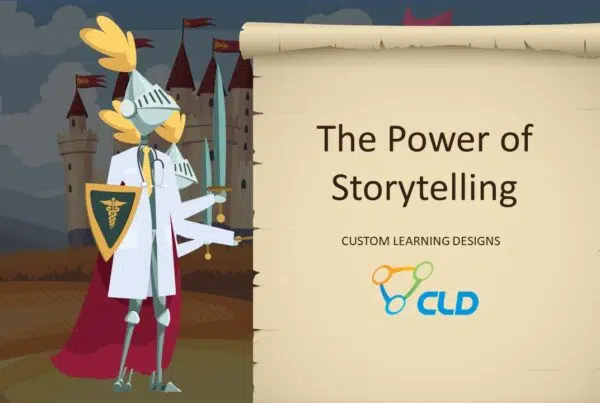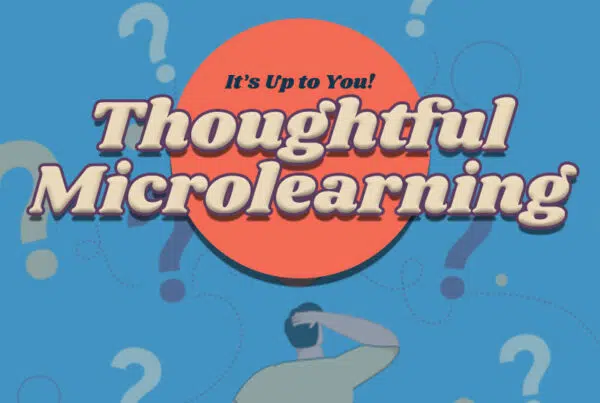“Organizations today have more content than ever before, often times across enormous product sets or company offerings, but if that content isn’t readily accessible in the field, then it’s impossible to expect a sales rep to be knowledgeable about every product or service,” he says.
In today’s “moment of need” business world, buyers expect to engage with salespeople that can tell them everything about anything. If a sales rep shows up to a meeting with a doctor about a particular medical device, but can’t also talk about his company’s prescription drug program, the original sale is automatically in jeopardy.
Brian says the bigtincan hub turns salespeople into real-time product experts and gives them access to the right knowledge at the right time.
We recently checked in with Brian to learn more about mobile content enablement platforms like bigtincan and how they empower sales forces to do more business. Here’s what he had to say:
What is a mobile content enablement platform?
Simply put, it’s designed to maximize the productivity of an organization’s workforce on mobile devices. A mobile content enablement platform is a single unified solution that securely delivers the right content to the right users at the right time and location on any mobile device. For lack of a better phrase, we call it “creating the last mile to the mobile sales force.”
Why is mobile technology so critical to sales teams today? What happens to businesses that don’t take advantage of it?
In enterprises today, sales teams are more mobile than ever before and need the right technology solutions to ensure they have real-time access to vital content that helps them better engage with customers. Today’s sales reps are up against more informed customers and less face-to-face selling time, so putting content into context is critical in delivering the right content at the right time. Doing so ensures users can easily find relevant content the moment that it’s needed, and allows companies to push necessary information to users based on specific events, roles, selling cycles, locations and other differentiators.
For example, if a sales rep is meeting a potential prospect for the third time and is halfway through the sales cycle, the right mobile technology will allow them to access all of the correlating information without having to search and surf through files, folders and content repositories. This real-time access to content improves efficiency, effectiveness and productivity across the enterprise and employees.
If companies don’t adopt mobile technology that enables employees in this way, they risk falling behind the competition with decreased productivity and a less informed sales force, as well as lengthier sales cycles. Imagine if your sales reps could get a prospect vital information before even leaving a meeting, instead of having to wait until they got back to the office.
What tools do you think salespeople in the pharmaceutical and medical industries should take advantage of?
iPads provide immense value to pharma and medical device sales reps, but not without the proper solutions and technology to enable the content they need.
Sales reps are getting less and less time in front of buyers, and those buyers are also further along in the sales process than ever before by the time a rep gets in front of them with a product. That means being able to access content and information the moment it’s needed is critical in closing deals. Take bigtincan customer Thermo Fisher Scientific, for example. The multi-billion scientific instruments and life sciences solutions firm needed a better way to support their sales force since reps were forced to find content and data from multiple sources, repositories and platforms, which wasted significant time and prevented the sales force from interacting with their peers while in the field.
The company provided iPads to their salesforce, but that wasn’t enough. Once implementing the bigtincan hub on those devices, Thermo Fisher was able to turn those iPads into dynamic engagement tools. Today, Thermo Fisher’s sales force has increased its connectivity and collaboration, ensuring that sales reps can spend more time in front of customers and interacting with peers than in an office manually searching for information and preparing materials for meetings.
Another tool that I think will become more and more commonplace for pharmaceutical and medical sales reps are wearables. Tools such as the Apple Watch in conjunction with a mobile content enablement platform can deliver significant business benefits. Imagine sales reps receiving real-time/relevant updates (such as a notification that the location of their next meeting had been changed), being able to take voice-dictated notes while commuting to their next customer appointment, or even being able to give a presentation on-the-fly through their wearable’s broadcasting functionality. Tools that enable sales reps to access the information they need in real-time, reduce the time spent in an office doing administrative tasks and better engage with customers and prospects are going to be critical to business success.
What are some of the unique challenges facing salespeople in the medical and pharmaceutical industries today?
Both are often tasked with selling ever-expanding product and service offerings. Thermo Fisher, for example, has more than 50,000 catalog products. Without being able to access that content – and being able to speak knowledgeably about those products with any customer at any moment – sales reps are just being set up for failure.
Salespeople in these industries are also incredibly mobile; many work almost full time in the field, so being bogged down by administrative tasks that must be completed at an office (e.g. sending follow-up emails, sending requested documents or preparing presentations for their meetings the following day) drastically reduces productivity. If sales reps are able to better complete those tasks on their iPads or mobile devices while in the field – in between meetings, let’s say – then they have more time in the day to actually sell. And if organizations can push content to their reps based on their upcoming schedule – for example, a sales deck specific to a client meeting they have the next day, rather than forcing the reps to search and surf through files and folders for the content they need, or spend time creating (or re-creating) content simply because they can’t find the information they need, – they can spend more time focusing on closing the deal.
Finally, compliance is a continuing challenge. Organizations have to ensure that their sales teams are using the most current, approved collateral when selling drugs or therapies to physicians. It’s nearly impossible to ensure compliance with disclosure requirements when distributing printed or electronic marketing collateral. Ensuring that the most current and compliant content is being pushed directly to the reps’ mobile devices solves this issue. Automating the sharing of marketing content files in conjunction with mandatory disclosure content files ensures version control while achieving all regulatory objectives.
How has the way companies do sell changed in the past 10 years?
Selling ten years ago was dominated by paper print outs and single-sell reps who focused on very specific product sets. But gone are the days when salespeople were forced to carry around pamphlets, brochures and product guides to their meetings. Not only is that method no longer sustainable, but buyers are demanding more. Buyers are more informed and educated than ever before – they know what they want and they’ve done their research – so if sales reps don’t come to the table equally as knowledgeable with access to a plethora of information (not just the information that can fit on a handout), they’re already at a disadvantage.
Ten years ago, sales reps could send follow-up information hours or even days after a meeting. Today, if a sales rep can’t send a follow-up email with the buyer’s requested information within minutes (or even in real-time during the meeting), the buyer has likely already made the purchase decision before the sales rep has the chance to influence the sales cycle. And like I said before, sales reps are no longer in charge of selling a particular product set like they were ten years ago. Instead, every sales rep is responsible for selling every product, and for being sufficiently knowledgeable about those products. So they must be able to find and access the information they need to fulfill their job responsibilities.
How do you think it will evolve in the next 10?
In ten years, I expect mobile technology – like bigtincan hub – will be commonplace in medical and pharmaceutical organizations. And over the next few years especially, we’ll see sales reps and buyers alike demanding that the organizations they work for or with deploy these types of solutions. Organizations will also fully understand the business benefits these mobile technologies bring to the bottom line – from increased productivity, to more intelligent content creation decisions and budget allocation, to significant ROI. Within ten years, technology like bigtincan hub will be a true need-to-have if a business is going to succeed.
Connect with bigtincan on Twitter, LinkedIn and Facebook.
Want your sales team to be ready for the future of selling? Check out Custom Learning Design’s resources for sales trainers.




